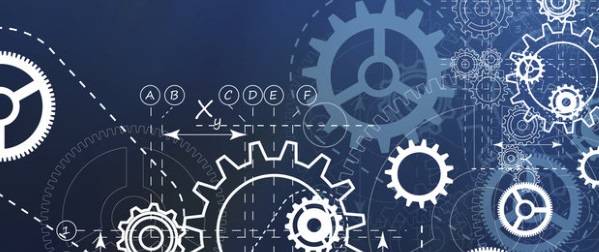Search posts by keywords:
Filter posts by author:
Related NEAT Reports
Other blog posts
posted on Jun 26, 2019 by Dominique Raviart

This week Capgemini announced its intention to acquire Altran in an all-cash transaction of €14 per share. The €5.0bn transaction, which includes €3.6bn in cash and Altran’s net debt of €1.4bn, provides a 30% premium over the last month. Capgemini has secured the 11% stake from Apax Partners and expects to close the acquisition by the end of 2019.
The acquisition provides significant scale to Capgemini. The combined organizations will have (2018 data) revenues of €16.1Bbn, an adjusted EBIT margin of 12.1%, and a headcount of 258k.
Altran’s troubled Aricent acquisition
Altran is the largest ER&D service vendor globally. Its 2018 revenues of €2.9bn (~$3.3bn) were ahead of Alten (~$2.6bn) and HCL Tech ($2.1bn).
Altran has undergone a lot of change since Dominique Cerutti became its CEO in June 2015. Under his leadership, Altran has changed its business model based on a strong agency presence in each country and:
- Developed its presence in India and nearshore countries
- Expanded its presence in the U.S.
- Shifted its portfolio towards specialized capabilities, mostly in digital.
A key development in Altran’s history was its March 2018 acquisition of Santa Clara HQ’d, India-centric Aricent. Aricent was a significant acquisition that brought in $0.7bn in revenues (mostly in the U.S.), strong capabilities in telecoms sector R&D, and a large delivery network in India (8.5k engineers).
Aricent had been struggling from a heavy client concentration in the telecom sector and, over the years, had diversified its telecom ER&D client base to the semiconductor, technology and ISV industries, as well as striking an IP partnership with IBM (not dissimilar to that of HCL Tech).
However, the integration of Aricent was not as smooth as Altran had expected: the company had a bumpy year in 2018, its share price impacted by the discovery of forgery in Aricent’s accounts representing $10m in revenue, investor concern about Altran’s net debt, and short sellers. Altran’s stock, which was trading at €14 per share before the Aricent acquisition announcement, went as low as €6 at the worst of the crisis. However, Altran had an excellent operational performance and finished 2018 with 8.0% CC/CS revenue growth and an adjusted EBIT margin of 12.1%. Its financial performance positioned Altran as the best performer among ER&D vendors with an onshore background.
Capgemini gets scale and several jewels
Capgemini has indicated for several years its strong interest in industrial and engineering services, having gained some modest presence in this market through acquisitions such Transiciel (mostly aerospace), Euriware (nuclear plants), and IGATE (medical devices) but remaining relatively small in this space, deriving around €0.3bn from ER&D revenues in 2018.
To a large extent, the acquisition of Altran will be a reverse takeover, with Altran being nine times larger than Capgemini’s Digital Engineering and Manufacturing Services (DEMS). The ER&D activities of the two firms represent €3.4bn in 2019 combined revenues and a headcount of 54k.
Altran has developed a significant offshore and nearshore presence, with 17.5k engineers. In total, Capgemini, after the Altran acquisition, now has an ER&D global delivery ratio of 39% in its ER&D activities, which is a good starting point.
Altran doubles the telecom, media and technology revenues of Capgemini and brings capabilities around 5G and next-gen telecom offerings. This is good timing, since telecom service providers in the U.S. and also in Europe are accelerating their 5G investment.
Altran also brings a software engineering capability servicing U.S. internet, cloud and collaboration giants in the U.S., along with large ISVs. Capgemini CEO Paul Hermelin highlights how attractive this capability and client base are to the company. Indeed, the FANGs and other internet/cloud firms dominate worldwide R&D spending, ranking ahead of the pharmaceutical sector, IT, aerospace and automotive.
Also, Altran brings two jewel organizations within its portfolio: with the acquisition of Aricent, Altran gained a product design firm, frog, which is known for having designed Apple products in the 70s-80s and has market recognition. Frog, with a NelsonHall estimated headcount of ~800, is similar to Capgemini’s Idean product design subsidiary, whose headcount we estimate at ~750.
In addition to frog, Altran brings in Cambridge Consultants, an innovation consultancy based in the U.K. that has 800 personnel, and one of the main firms operating in this space. Cambridge Consultants is good at identifying technology opportunities and has spun-off several technology firms; some of which were listed on the U.K. stock exchange.
Capgemini wants to lead in digital manufacturing
The ambitions of Capgemini go beyond the leadership in ER&D services that Altran brings. The company is targeting the increasing adoption by manufacturing operations of technology including IoT and digital twins initially, and then the refresh of manufacturing systems such as MES and SCADA, some of which have been operating for 30 years and will need to go through an upgrade cycle. Hermelin believes Capgemini is well equipped for leading the market; indeed, it is the largest by revenues and by portfolio and has the right delivery network to balance its client’s needs for offshoring and onshore delivery.
All in all, with Altran, Capgemini is making a bold move that positions the company ahead of competitors in the digital manufacturing space. The downside is that Capgemini is adding €5bn in net debt to its €1.8bn net debt at the end of 2018. As a result, Capgemini will refrain from making acquisitions for the next two to three years.
NelsonHall is currently working on a major Digital Manufacturing Services project as part of its IT Services research program. To find out more, contact Guy Saunders.
